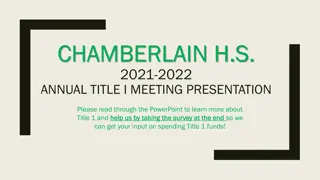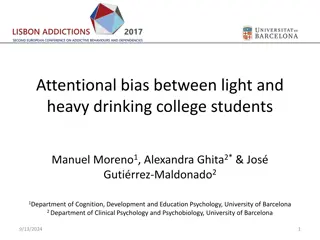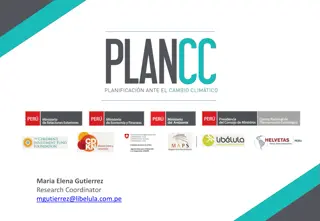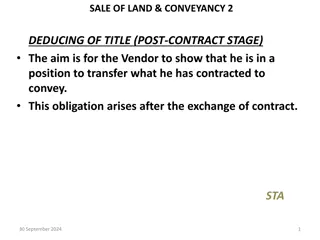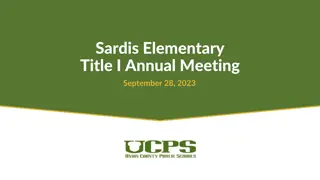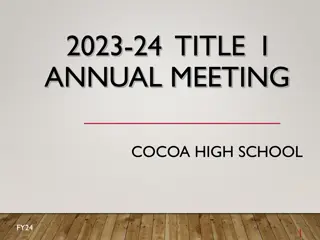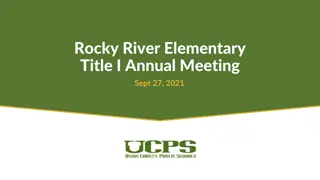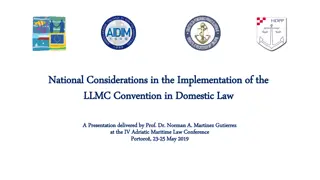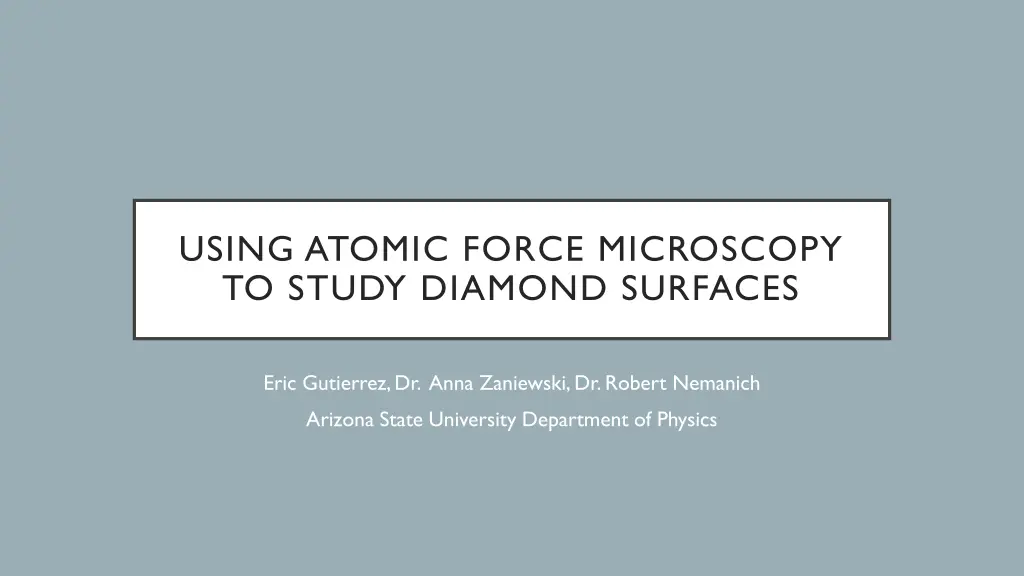
Studying Diamond Surfaces with Atomic Force Microscopy
"Explore how Atomic Force Microscopy (AFM) is used to investigate diamond surfaces and their electrical properties through Conductive AFM (C-AFM) and Kelvin Probe Force Microscopy (KPFM). Discover the benefits of diamond as a wide band gap semiconductor and its potential in electronics and radiation detectors. Learn about the working principles of AFM, KPFM, and C-AFM, and the unique characteristics that make diamond a versatile material for high-temperature and radiation environments."
Download Presentation

Please find below an Image/Link to download the presentation.
The content on the website is provided AS IS for your information and personal use only. It may not be sold, licensed, or shared on other websites without obtaining consent from the author. If you encounter any issues during the download, it is possible that the publisher has removed the file from their server.
You are allowed to download the files provided on this website for personal or commercial use, subject to the condition that they are used lawfully. All files are the property of their respective owners.
The content on the website is provided AS IS for your information and personal use only. It may not be sold, licensed, or shared on other websites without obtaining consent from the author.
E N D
Presentation Transcript
USING ATOMIC FORCE MICROSCOPY TO STUDY DIAMOND SURFACES Eric Gutierrez, Dr. Anna Zaniewski, Dr. Robert Nemanich Arizona State University Department of Physics
OVERVIEW In this project we use two forms of Atomic Force Microscopy (AFM) to study the surfaces of diamond and their electrical properties. ConductiveAtomic Force Microscopy (C-AFM) Kelvin Probe Force Microscopy (KPFM) An AFM is a type of microscope that scans a sharp tip across a surface to measure its topography or electrical properties. For this project we use AFM to study diamond. Diamond is attracting great interest due to its many unique qualities, like its wide band gap (5.45 eV), its ability to operate under high temperatures and in radioactive environments among other qualities. So far,we have taken a n-type nanocrystalline diamond film on molybdenum and scanned its topographical surface. Our next steps would be to carry out electrical measurements with the KPFM to determine the samples electric potential in various areas of the surface to study its anisotropicities as well as its electrical-topographical correlation. We will also use C-AFM to study how its resistance varies over various areas of the sample.
BENEFITS OF DIAMOND Diamond can be used as a wide band gap semiconductor. Diamond s band gap (5.45 eV) is much greater than silicon s (1.1 eV),which currently dominates electronics. This advantage opens many new possibilities to implement diamond power electronics and radiation detectors. Diamond is also capable of operating under high temperatures and in extreme radiation environments, such as space. The Nemanich Diamond Lab has the ability to grow doped diamond which is essential for making PIN,Schottky, and Schottky PIN structures. This project contributes to the development of diamond electronics by deepening our understanding of its surface properties. We want to study not only the topography of the material but also its electronic properties like its topographic-electronic correlation as well as its surface potential.
WHAT IS AN AFM? The way in which a normal AFM works is simple. Laser Photodetector The sample to be measured is placed on top of a sample holder. The cantilever holds and drives the tip on top of the sample. Cantilever The laser is aimed at the cantilever. As the cantilever moves up and down while scanning the surface it reflects the laser. Sample Sample Holder The photodetector then detects the laser reflection along with its deviations and creates a digital scan.
HOW ARE KPFM AND C-AFM DIFFERENT? There are three main elements that differ these two from the regular AFM. The probe tip must be conductive. A voltage source is required to apply a potential difference between the tip and the sample holder. A preamplifier is needed to convert to signal for processing. These three main elements allow us to perform measurements with the KPFM and the C-AFM Additionally the sample is usually held by conductive tape or paste. Photodetector Laser Pre-Amplifier Conductive Cantilever Sample Data Output Sample Holder
EXPERIMENT AND RESULTS The sample used in this project is a n-type nanocrystalline diamond film on molybdenum. To make this sample, a molybdenum plate is coated with diamond grit and then put in a chemical vapor deposition chamber (CVD) to grow a continuous diamond film. During the growth, nitrogen is incorporated making the film n- type. As shown in the following figure, the AFM allows us to scan the surface of small areas on our sample. This shows a scan of the height over a 20umX20um diamond surface with a small area highlighted in red.
EXPERIMENT AND RESULTS CONTINUED As shown on these figures, the AFM allows us to scan the surface of small areas on our sample. We can then get key information (like the one shown in the table below), from our scan. Including the height at certain points, our max and min points, the standard deviation of the height and the height of features along the scanned surface. This shows the highlighted area in red from the previous figure for which we can see a graph representation of the height along the highlighted path. From these images we can see a continuous film of diamond nanocrystals with a grain size of <1um. Roughness (Standard Deviation of the Height) 44 nm Max height Min Height 433 nm
NEXT STEPS For our next steps we would like to perform the electrical measurements using the KPFM and the C-AFM as well as to study different diamond structures. Surface Potential Imaging with Kelvin Probe Force Microscopy KPFM enables nanometer-scale imaging of the surface potential on a broad range of materials. The KPFM measures the contact potential difference between a conducting AFM tip and the sample. This difference (????) is defined by: ???? ??????? ? ????= Where ???? and ??????? are the work functions of the tip and sample and ? is the electronic charge. When the tip of the AFM is near the sample, an electric force is generated because of their different Fermi energy levels. When electric contact occurs, the Fermi levels will align through electron current flow and the system will reach and equilibrium state.
NEXT STEPS CONTINUED Conductivity Imaging with Conductive Atomic Force Microscopy Conductive Atomic Force Microscopy measures the topography and the electric current flow simultaneously. Like on a normal AFM topography is measured by the deflection of the cantilever while the current is measured through a current-to-voltage preamplifier. Preamplifier converts a weak electrical signal into a strong enough signal for further processing. When there is a potential difference between the tip and the sample holder, an electric field is created. This results in a net current flowing from tip to sample or vice versa. The current collected then obeys the following relationship: ? = ?????
CONCLUSIONS By better understanding the physical properties of diamond surfaces we can contribute to the development of diamond electronics for the application of power and radiation detection. This technology can then be implemented in upcoming NASA missions such as CubeSats, Explorers, Solar Terrestrial Probe (STP), Living With a Star (LWS), and planetary exploration missions. These missions will require new instruments to detect radiation and particles in space. By studying these diamond surfaces with the AFM (and its variants KPFM and C-AFM) we can better understand and control diamond processing.
ACKNOWLEDGEMENTS I would like to acknowledge Dr. Anna Zaniewski for her guidance and patience on this project as she provided me with invaluable knowledge and experience. I would also like to acknowledge, Dr. Robert Nemanich for allowing me to use and form a part of his lab and its resources as well as Franz Koeck for growing the diamond film on our samples. Finally, I also acknowledge ASU NASA Space Grant with granting me this great opportunity to get involved in research.




